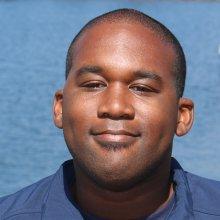
Robert Boyd
Tell us about your work/research. What kinds of things do you do?
I have found that I excel best where the two subjects of biology and performing arts intersect. It is for this reason that I work as a science communicator and wildlife filmmaker. Moving forward, I would like to focus on creating films that highlight the microscopic world. I have experimented with a variety of macro lenses, and even created an underwater microscope that allows me to record an ‘eye level’ view of microscopic life. My goal is to record the activity of microorganisms, from copepods to cyanobacteria, in their natural habitats across the globe.
What sparked your initial interest in your career?
I watched a lot of Magic School Bus as a kid. That show infected me with the idea that science and the arts are inherently integrated. Science brings us amazing discoveries, and the arts help the public understand how cool these discoveries really are.
Who influenced you or encouraged you the most?
I am very lucky to have a mother who supported my work growing up. She has had to deal with a basement filled cameras taking time-lapses blooming flowers, and tables covered with countless jars of microscopic pond life.
What element of your work / study do you think is the most fascinating?
The natural world is filled with all sorts of cool adaptations that I love to observe. I am drawn to the beauty that lies in nature’s aesthetic diversity, from the butterfly’s iridescent wings to the heron’s spear sharp beak.
What other jobs led you to your current career?
As an undergraduate, at the College of William and Mary, I worked with a variety of professors, bringing scientific discoveries to the college community. My work included creating several nature-oriented videos for the William and Mary News, leading an ornithology class on an outdoor expedition to locate and film a great horned owl nest, creating timed-lapsed sequences of college greenhouse plants, and photographing, and labeling histological structures for the creation of a comprehensive Lobster Histology Atlas. Most recently, I have worked as a filmmaker and editor under Jaime Reaser, Executive Director of the National Invasive Species Council. I have gathered a variety of footage, ranging from underwater footage of snakeheads to time lapses of blooming plants, as well as numerous interviews with professors and students. This footage has been gathered for the creation of a feature-length film commissioned by the Department of Interior.
What are your degrees and certifications?
Bachelor of Arts in Film and Media Studies -- College of William and Mary 2016
What are your hobbies?
I love hiking in nature, filming wildlife, and listening to science fiction and fantasy audiobooks.
What advice would you give to someone who wants to have a career like yours?
If you want to work in science communication, you don't necessarily have to major in a STEM field, but I suggest taking plenty of science courses, and doing plenty of your own research outside of the classroom. The better you understand a subject, the easier it is to create content that shows people just how interesting it is. Remember that the arts play an important role in translating and bringing scientific discoveries to the public.
How did you get involved with the Nautilus Exploration Program? How did you get on the ship?
One of my undergraduate professors, at the College of William and Mary, thought I might be interested in the program, and suggested I apply.
Expeditions
Robert participated in the following Ocean Exploration Trust expeditions:
